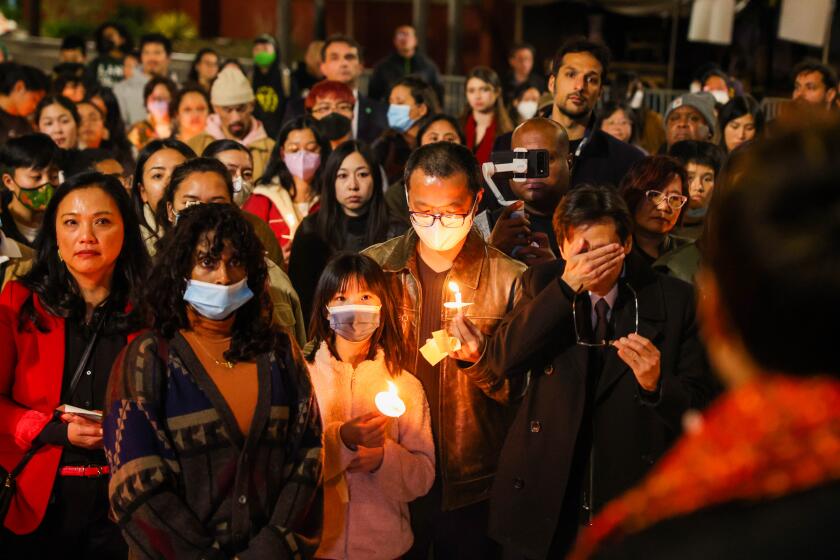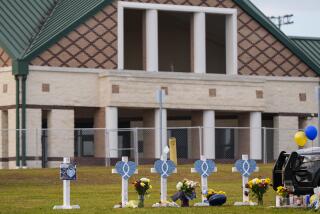Motive sought in Michigan State University shooting as community reels
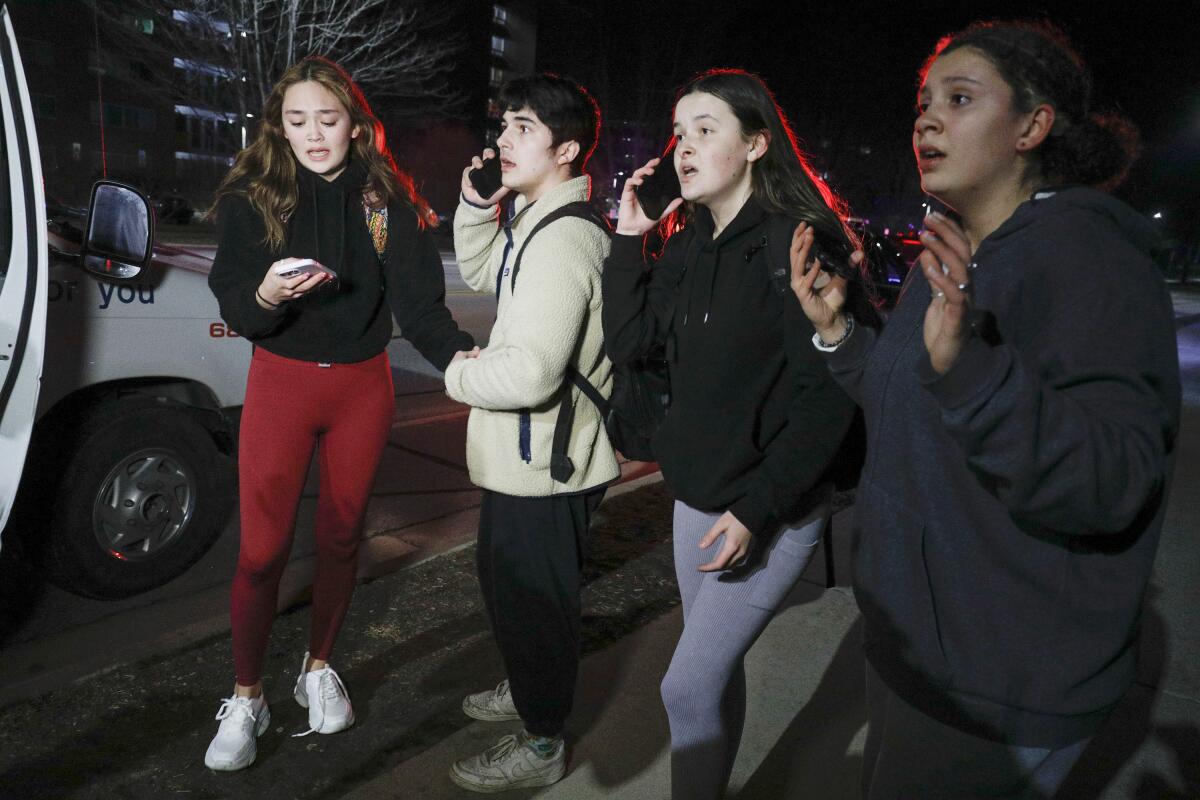
With Monday night’s rampage at Michigan State University, the city of East Lansing has joined the list of American communities that have experienced the kind of trauma sickeningly familiar to a generation that’s come of age against a backdrop of school shootings.
The shooting at Michigan State occurred nearly five years to the day after a massacre at Marjory Stoneman Douglas High School in Parkland, Fla., left 17 people dead — an event that galvanized a wave of activism, led by the survivors, to enact tighter gun laws across the country as they vowed “never again.”
Yet the national debate over gun violence continues in America, with many calling on Congress to act even as they mourn lives lost in the latest tragedy.
University police on Tuesday identified the three students killed as Brian Fraser, a sophomore from Grosse Pointe, Mich.; Alexandria Verner, a junior from Clawson, Mich.; and Arielle Anderson, a junior from Grosse Pointe.
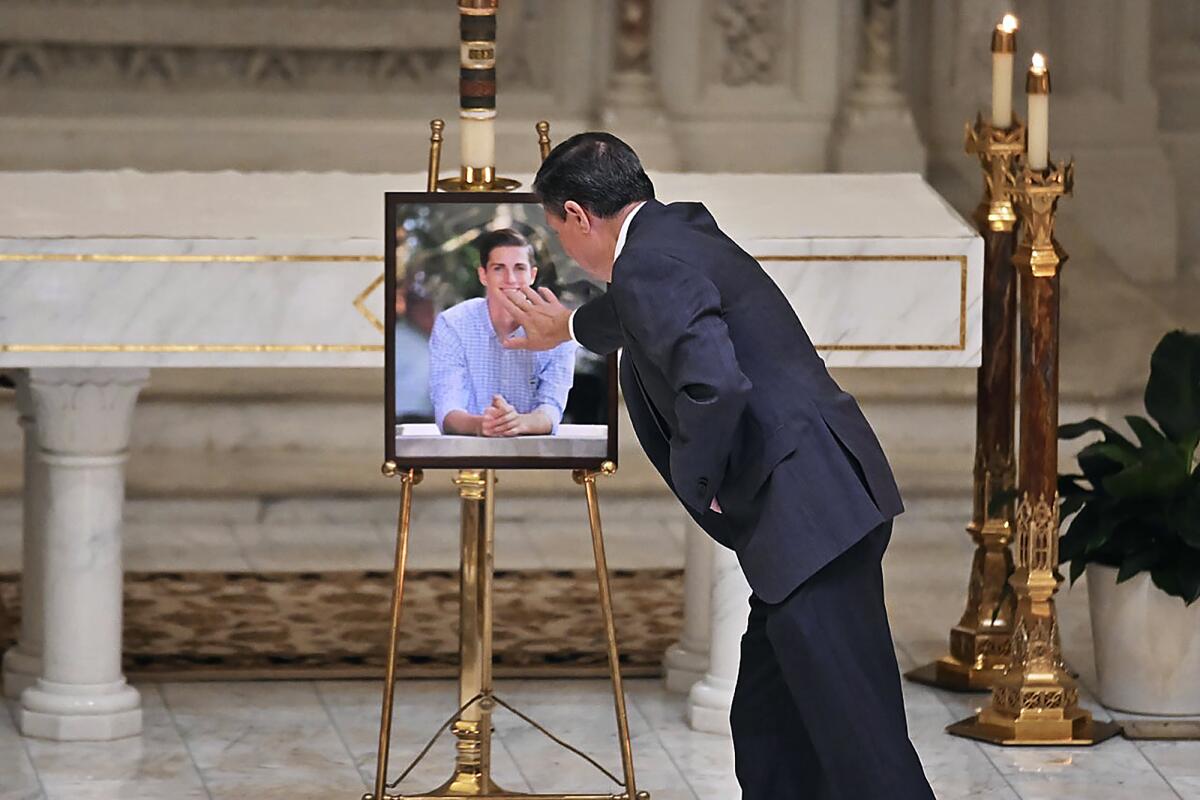
Five other students remained hospitalized in critical condition.
The gunman in Monday’s attack had no known connection to the school and later killed himself.
Teresa K. Woodruff, interim president of Michigan State, said at a news conference Tuesday that the community was in mourning and offered peace and condolences to the victims’ families.
“Our Spartan hearts are broken,” Woodruff said. “We struggled to comprehend we lost families, friends, classmates, and our hearts go out to the victims and families of the senseless tragedy.”
The gunman was identified as Anthony Dwayne McRae, 43, whom university police said died Monday night of a self-inflicted gunshot wound. He had no known connection to the school, and police had not yet established a motive Tuesday.
A caller’s tip led authorities to his location in Lansing, the state capital, after police released a photograph on social media, said Christopher Rozman, deputy chief of the Michigan State University Department of Police and Public Safety. The shooter was dead of “self-inflicted gunshot wounds,” Rozman said.
The gunman had no association with the university, Rozman said, adding that he was never a student, faculty or staff member.
“We have absolutely no idea what the motive was at this point,” Rozman said. “That’s an unknown right now.”
Michigan State, which is home to 50,000 students, is operating under a modified schedule and has suspended all activities and classes, the school said on its website.
At 8:17 p.m. Monday, university police received a call about shots fired in Berkey Hall, an academic building on the northern end of campus. Rozman said officers were on the scene within minutes and found several people injured.
Two of the students who died in the attack were in Berkey Hall, Rozman said.
As officers were in Berkey Hall, more calls came in about shots fired at the university’s student union building. Officers were sent there and found one additional victim who was among the dead, Rozman said.
Authorities believe the gunman exited Berkey and walked to the student union, about one block west, before quickly fleeing, Rozman said. “He was not in the building for that long,” he said.
Rozman declined to answer questions about the time between the two attacks, citing the ongoing investigation.
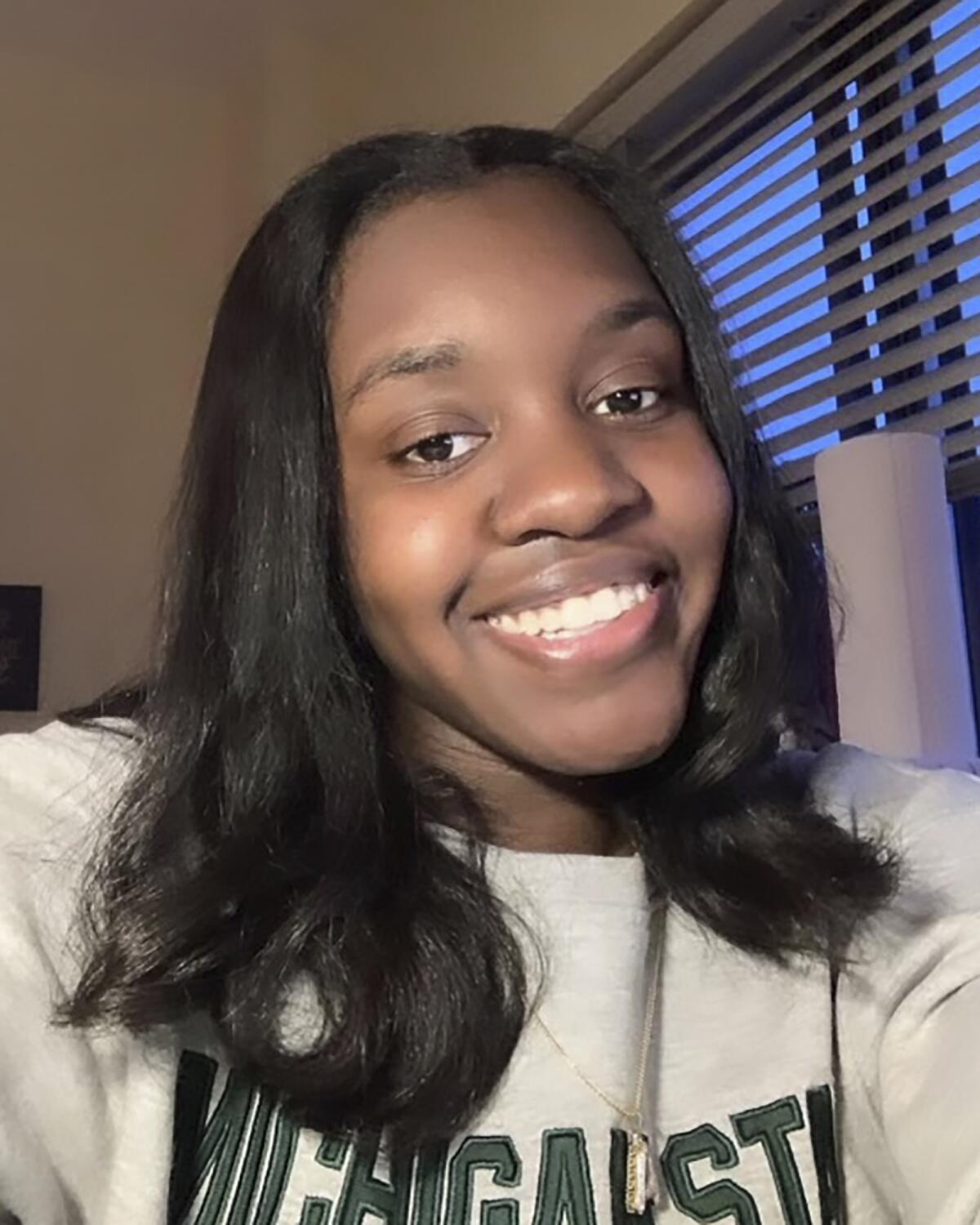
The shooting set off a four-hour manhunt as hundreds of law enforcement officers combed the campus and tens of thousands of students and community members sheltered in place.
Campus security cameras captured images of the suspected gunman around 11 p.m., Michigan State police said. At 11:18 p.m., the department released the photos on social media showing a man in red shoes, a jean jacket and a navy baseball cap with a lighter brim.
Gun violence has become the drumbeat of our days. We say we’re shocked, but we’re really not. We say we’re in disbelief, yet we’re really not.
Rozman said an “alert citizen” called in the suspect’s location, which was dispatched to police units off campus assisting in the search. The call came in about 11:35 p.m., just 17 minutes after the release of the photos, university police said.
“We cannot thank the public, the community and the person who called in that report enough for being observant, for following our messaging and for being vigilant and contacting us immediately,” Rozman said.
One gun was recovered, but police are still investigating the weapon used in the attacks, Rozman said.
Police searched a home that was connected to the gunman, Rozman said, adding that he could not confirm its location.
In 2019, McRae was arrested and pleaded guilty to possessing a loaded firearm in a vehicle, according to a court record from Ingham County, Mich. The gun was legally registered to him, but he did not have the required concealed carry permit, according to the Ingham County prosecutor.
A concealed weapons charge was dismissed as part of a plea agreement, and McRae was sentenced to 12 months’ probation, which he completed in May 2021, the record shows. Even if McRae had been convicted of the concealed weapons charge — a felony that carries a statutory maximum of five years — he would not have been recommended for a jail or prison sentence, the prosecutor’s office said.
In an interview with the Washington Post, Michael McRae, the shooter’s father, said his son lied about keeping a gun in their home in Lansing, Mich., after his 2019 arrest. Michael McRae told the Post he once confronted his son about gunshots he heard in their backyard, but his son insisted it was just fireworks despite the bullet casings on the ground.
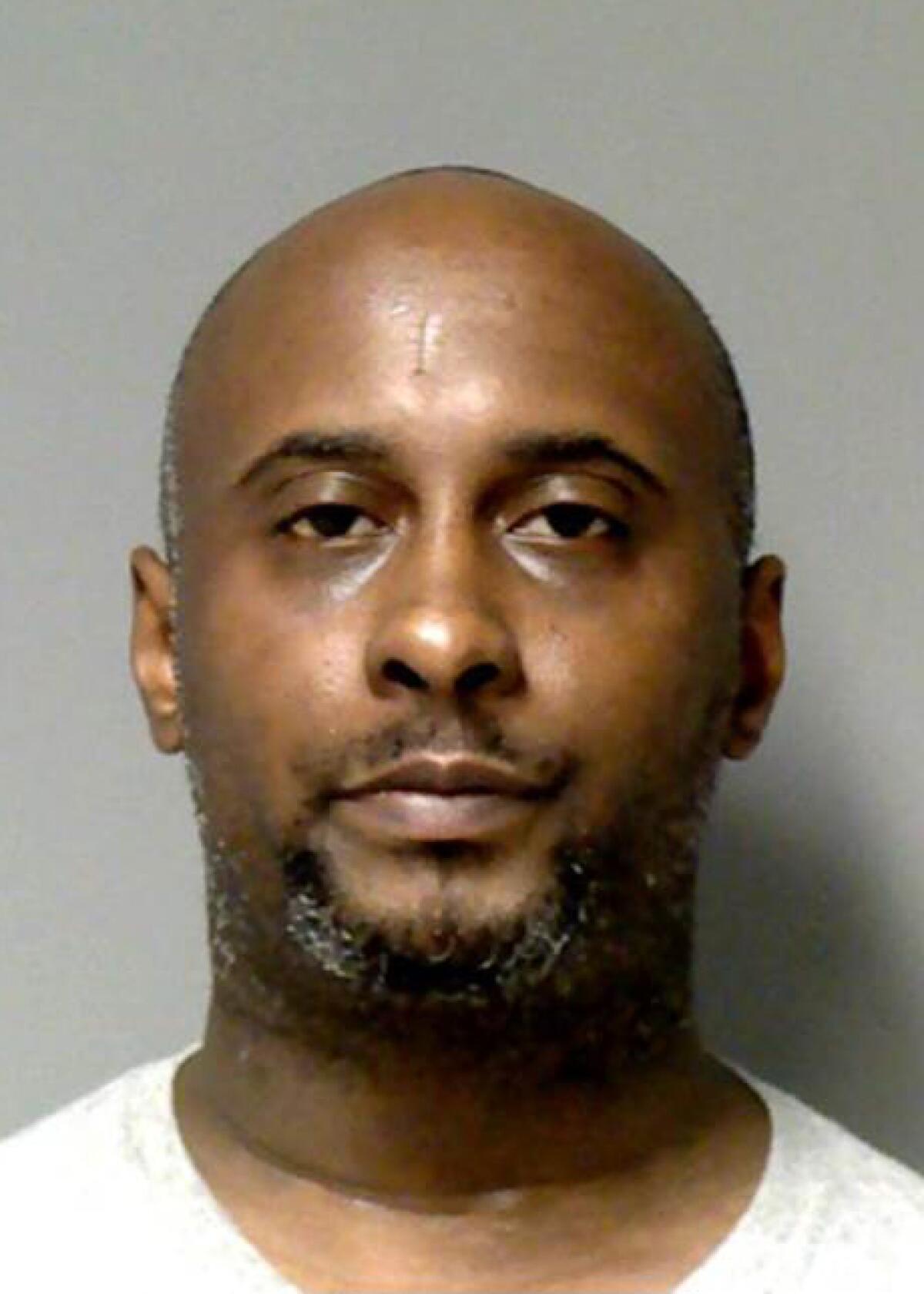
“I told him to get rid of the gun,” Michael McRae, 66, told the Post. “He kept lying to me about it and told me he got rid of it.” His son never showed him the gun, which he purchased after his weapons charge, Michael McRae said.
Michael McRae said his son was having difficulty coping with his mother’s death in 2020 from a stroke. His son “was depressed and overly stressed out,” shutting himself in his room when he was home, he said. In his interview with the Post, he offered his condolences to the victims’ families.
Michael McRae did not immediately return requests for comment Tuesday.
In Ewing, N.J., a school district closed for the day Tuesday after police discovered that the gunman had ties to the community and made threats against some schools, the Ewing Police Department said in a statement.
When police in Michigan found the shooter, he had a note in his pocket “that indicated a threat to two Ewing public schools,” Ewing police said. The shooter, who had not lived in Ewing for several years, had a “history of mental health issues,” the department said.
Though an investigation revealed there was no active threat, Ewing schools remained closed Tuesday “out of an abundance of caution,” police said, with officers stationed at schools throughout the area.
According to the Gun Violence Archive, an independent online database that tracks gun violence using police, government, media and other public data, there have been 67 mass shootings in the United States so far this year. The archive defines a mass shooting as having a minimum of four victims shot, either injured or killed, not including any shooter.
Among that list are last month’s California shootings in Monterey Park, in which 11 people were killed, and Half Moon Bay, which left seven people dead — two attacks that occurred less than 48 hours from each other.
At Tuesday’s news conference, Rep. Elissa Slotkin (D-Mich.) said she was haunted by an image on TV news of a young person at Michigan State wearing an “Oxford Strong” sweatshirt Monday night — a reference to a December 2021 shooting at Oxford High School in Michigan in which four students were killed.
“We have children in Michigan who are living through their second school shooting in under a year and a half,” said Slotkin, whose district includes both East Lansing and Oxford. “If this is not a wake-up call to do something, I don’t know what is.”
Democratic Gov. Gretchen Whitmer said the community was reeling from a “uniquely American problem.”
“As parents we tell our kids it’s going to be OK; we say that all the time,” Whitmer said at the news conference. “But the truth is words are not good enough. We must act, and we will.”
In a statement, President Biden said he and First Lady Jill Biden had offered prayers for the victims and once again urged Congress to do more to enact commonsense gun legislation.
“Our hearts are with these young victims and their families, the broader East Lansing and Lansing communities, and all Americans across the country grieving as the result of gun violence,” Biden said.
Everytown for Gun Safety, a gun violence prevention organization, ranks Michigan 24th in the nation for its firearm legislation. Though the state requires a permit to purchase handguns and for sales records to be sent to law enforcement, it lacks important gun safety laws, according to Everytown’s website.
Last month, Whitmer called for tighter gun control legislation, including universal background checks, safe storage laws and extreme list laws, or “red flag” laws, which allow law enforcement, and family members in some cases, to petition courts to temporarily prevent someone in crisis from accessing a firearm.
More to Read
Sign up for Essential California
The most important California stories and recommendations in your inbox every morning.
You may occasionally receive promotional content from the Los Angeles Times.
